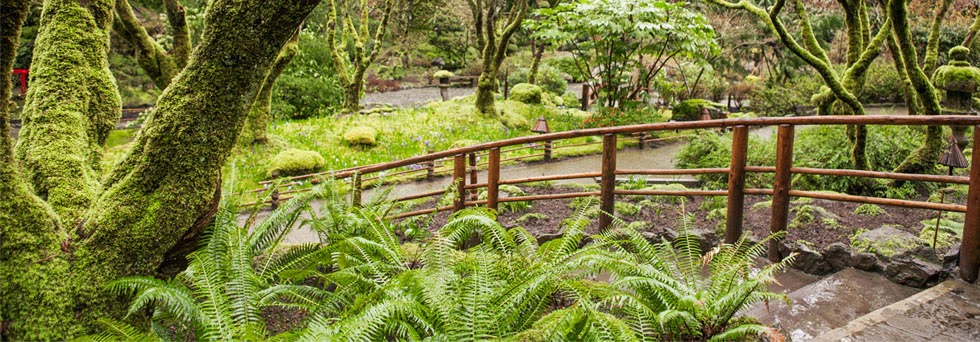The proper bonsai pot needs to act as a picture frame for your finished bonsai and not detract from the overall composition that you are trying to achieve. The correct pot should be no more than 20 to 25 percent of the visual weight of the finished bonsai. This holds true with trees in the range of 12 inches and larger. With Shohin and Chuhin the rules are a little more relaxed and you can use bonsai pots of vibrant colors such as yellows, reds, and blues. When picking pots for your larger trees the general consensus is that you use unglazed pots for your pines and junipers and glazed pots for your deciduous trees. An old black pine in a nice blue pot is a little jarring. There are exceptions to these ideas but these are just general guidelines. When choosing a glazed pot look for glazes that are muted and have an appearance of age. You want the pot to have a certain patina that only use and age will provide. If you place your new bonsai pots under your benches for a season or two you can begin the process of aging and seasoning your containers.
One of the problems many of us have is buying a pot that we like and then trying to make a tree that we already have fit the container that we just spent a lot of money on. This is the wrong approach as we should be looking for a bonsai pot that suits the tree and not the other way around. The old adage in bonsai is that you can never have enough pots, and you never have the right pot for that special tree when it comes time to repot, so it's time to buy a new one. This is okay, and sound judgment since I sell pots; however, spend the needed time to decide what that special pot should be. A general rule of thumb is that the pot's depth should be 1 to 2 times the thickness of the trunk and the length should be 2/3 of the height. However, as this is just a rule of thumb, we can ignore it if need be to make sure that the tree remains healthy and continues to thrive.

 This style of bonsai pot is often used for Bunjin style trees or trees with thin trunks when using the shallow type container, and is appropriate to use in a cascade style with heavier trunked trees.
This style of bonsai pot is often used for Bunjin style trees or trees with thin trunks when using the shallow type container, and is appropriate to use in a cascade style with heavier trunked trees.
 |
| .
Here you see a bonsai pot in the Mokko shape. These pots can be used for trees that are a little more feminine in style. This shape of the pot comes in deep and shallow forms so is very versatile
|
 The octagon shape is a much stronger shape and can be used for trees that are stronger visually. These bonsai pots also come in different depths so you will see them for cascade style trees along with shallower styles for upright styles.
The octagon shape is a much stronger shape and can be used for trees that are stronger visually. These bonsai pots also come in different depths so you will see them for cascade style trees along with shallower styles for upright styles.
For that strong upright tree you might want to consider a rectangular or square shape as these pots project a strong image and will give your tree additional visual strength. You will find rectangular pots that have rounded corners or cut corners that will change the overall look and feel of the finished composition.
One of the best resources for advice on the proper bonsai pot is the Bonsai Albums published by the Kokufu-ten and Gafu-ten shows in Japan. It is very informative to see what the experts are choosing for their pot choices. It is a valuable guide and a pleasure to look at what is possible.



The Japanese pots for bonsai are a whole world, exciting and beautiful to discover. It is true that at the beginning it can be complicated to handle some terms, but with post like this one on tokoname pots, it is much easier. Thanks for sharing.
ReplyDeleteI have a post on my blog about the bonsai and its cultivation step by step, trying to pot bonsai pde. I have some pots for sale, with images of Japanese author pots, stamped with stamps of important Japanese authors and of great quality.
If it is interesting, I leave the link. Greetings and thank you.
Blog Bonsai
I will be happy to know other opinions and contributions to my blog, where I also collect other bonsai techniques, such as transplant, fertilizer, layering, cuttings, etc.
Las macetas japonesas para bonsai son todo un mundo, apasionante y bello por descubrir. Es cierto que al principio puede resultar complicadl manejar algunos términos, pero con post como este sobte macetas de tokoname, es mucho más fácil. Gracias por compartir.
Yo tengo un post en mi blog sobre el bonsai y su cultivo paso a paso, tratando de macetas pde bonsai. Tengo algunas macetas en venta, con imágenes de macetas japonesas de autor, selladas con sellos de importantes autores de Japón y de gran calidad.
Si resulta interesante os dejo el enlace. Un saludo y gracias.
Macetas bonsai
Estaré encantado de conocer otras opiniones y aportaciones a mi blog, donde también recojo otras técnicas de bonsai, como el trasplante, abono, acodos, esquejes, etc.